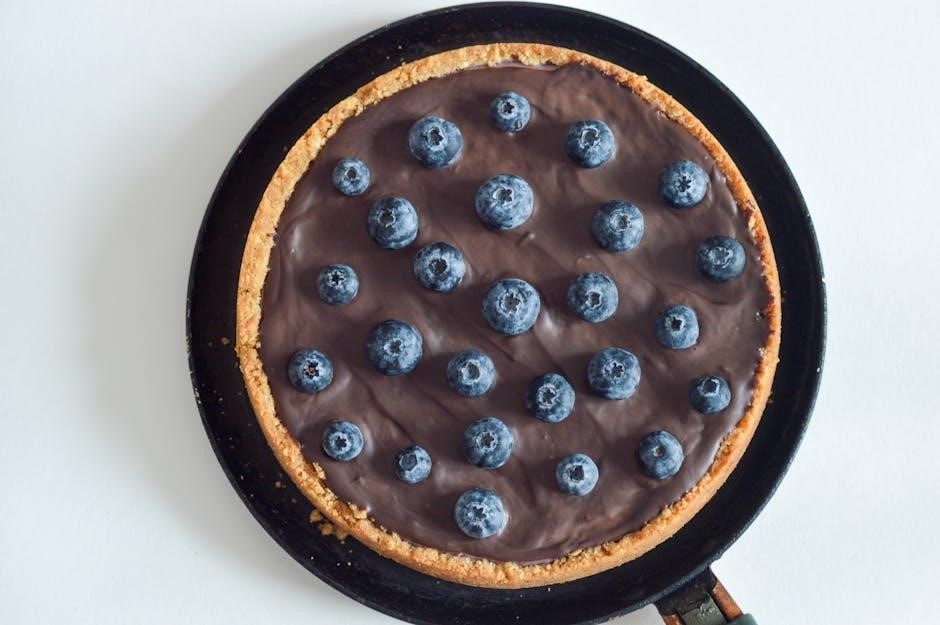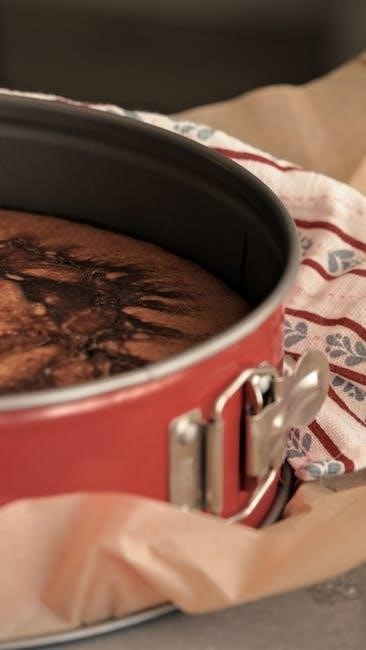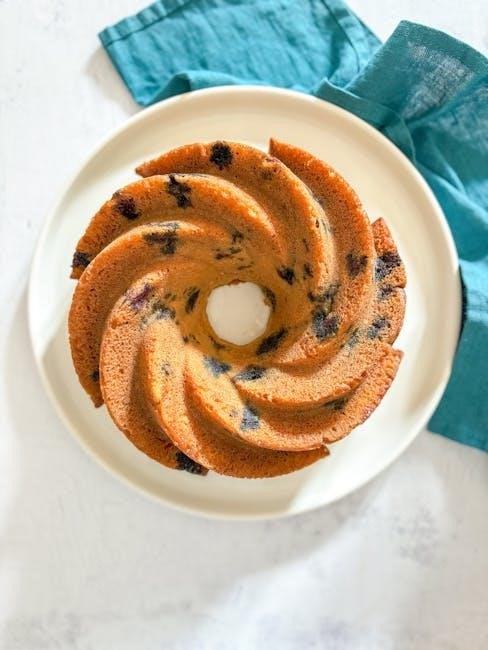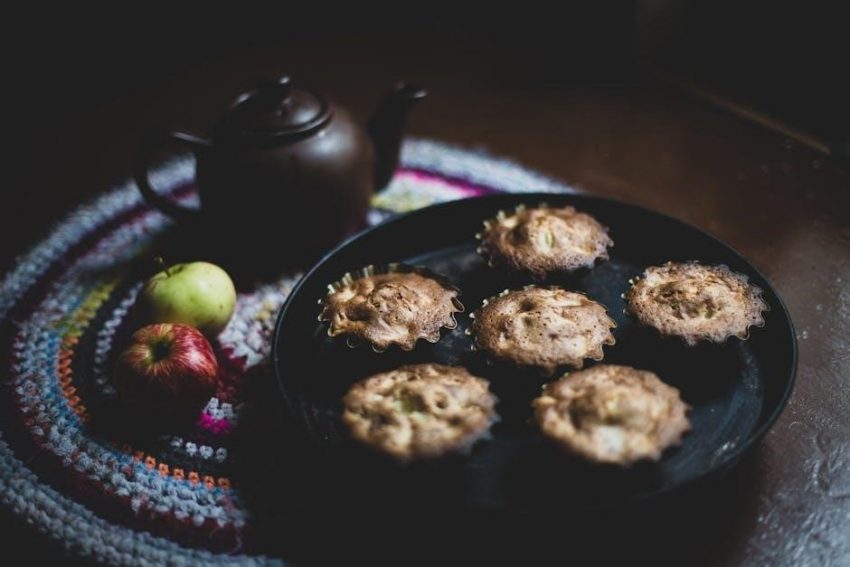Wilton cake pans are renowned for their durability and versatility, offering a wide range of shapes and sizes for both traditional and creative bakers. Proper preparation, including greasing and flouring, ensures flawless cake release. With over 90 years of expertise, Wilton provides detailed PDF instructions for each pan, guiding users through baking, decorating, and care. These resources help bakers achieve professional results, whether using classic round pans or intricate 3D molds.
Overview of Wilton Cake Pans
Wilton cake pans are crafted from durable materials like aluminum, silicone, or heavy-gauge steel, ensuring even heat distribution and long-lasting performance. They come in various shapes, including traditional, novelty, and 3D designs, catering to both home bakers and professionals. Detailed PDF instructions are available for each pan, covering preparation, baking, and care. These guides help users achieve perfect results and maintain the pans’ quality over time.
Importance of Proper Usage and Care
Proper usage and care of Wilton cake pans are crucial for maintaining their quality and ensuring optimal baking results. Hand washing in hot, soapy water is recommended to prevent discoloration and damage. Avoid using dishwashers, as this can harm non-stick coatings or cause discoloration. Proper preparation, such as greasing with solid shortening and dusting with flour, prevents cakes from sticking. Following the PDF instructions ensures longevity and flawless performance of the pans.
Types of Wilton Cake Pans
Wilton offers a variety of cake pans, including traditional, shaped, and 3D options; Each type is crafted from durable materials like aluminum, silicone, or heavy-gauge steel for optimal performance.
Traditional Pans
Wilton’s traditional pans are available in round, square, rectangular, oval, and heart shapes, offering versatility for classic recipes. Made from aluminum, silicone, or heavy-gauge steel, these pans ensure even heat distribution and easy cake release. Most are 2 inches deep, accommodating standard batter quantities. Proper preparation with shortening and flour or Wilton Cake Release is essential for perfect results. These pans are ideal for both home bakers and professionals, providing consistent performance across various recipes.
Shaped and Novelty Pans
Wilton’s shaped and novelty pans offer unique designs, from cartoon characters to holiday themes, allowing bakers to create intricate cakes effortlessly. These pans feature indented or molded details for standout results. Proper preparation is crucial; ensure shortening or spray reaches all indentations. They are perfect for themed celebrations and add a creative touch to any dessert. Detailed PDF instructions guide users for optimal baking and decorating outcomes with these fun and imaginative pans.
3D and Specialty Pans
Wilton’s 3D and specialty pans create freestanding cakes in shapes like animals or sports balls, offering a wow factor for special occasions. These pans consist of two halves that snap together securely. Proper preparation and baking techniques, as outlined in Wilton’s PDF instructions, ensure even cooking and easy release. They require precise batter measurement and may need longer baking times. Use kitchen twine to keep them aligned during baking for flawless results.

Preparing Your Wilton Cake Pan
Properly prepare your Wilton cake pan by greasing with solid shortening and flouring, or use Wilton Cake Release or cooking spray for easy cake release and cleanup.
Greasing and Flouring the Pan
Proper greasing and flouring are essential for ensuring your cake releases smoothly. Use a pastry brush to apply a thin, even layer of solid vegetable shortening to the pan’s interior. For intricate designs, ensure all details are covered. Lightly sprinkle flour over the greased surface, shaking off excess. Avoid using butter or liquid oils, as they can cause sticking. This method ensures a clean release and maintains the pan’s quality for future use.
Using Wilton Cake Release or Cooking Spray
For a seamless baking experience, apply Wilton Cake Release or a high-quality cooking spray evenly to the pan’s interior. This ensures the cake releases effortlessly without sticking. Use a pastry brush to cover all surfaces, especially intricate details. Avoid using butter or liquid oils, as they can damage the pan. Wilton Cake Release is specifically designed for their pans, promoting easy cleanup and maintaining the pan’s durability for future bakes.
Ensuring Proper Pan Preparation
Proper pan preparation is crucial for successful baking with Wilton cake pans. Wash the pan in hot, soapy water and dry thoroughly before use. Apply a thin, even layer of solid shortening or Wilton Cake Release to all surfaces, ensuring no areas are missed. For intricate designs, use a pastry brush to cover small details. Avoid using liquid oils or butter, as they may damage the pan or cause sticking. Proper preparation ensures easy cake release and maintains the pan’s condition for future use.

Baking with Wilton Cake Pans
Preheat your oven to the recommended temperature, typically 350°F. Place the prepared pan on a cookie sheet for even heat distribution and to catch overflow. Bake according to recipe instructions, ensuring even browning by placing the pan on the top rack. For complex designs, baking times may vary, so monitor closely and adjust as needed.
Preheating and Oven Temperature
Preheating your oven to the correct temperature is essential for baking with Wilton cake pans. Typically, preheat to 350°F, but adjust based on the pan material and recipe. For dark pans, reduce temperature by 5-10°F to prevent over-browning. Place larger pans on a cookie sheet for even heat distribution. Avoid using convection settings unless specified. Ensure accuracy with an oven thermometer, especially at high altitudes. Always follow Wilton’s PDF instructions for specific guidance.
Filling the Pan and Baking Time
Fill Wilton cake pans no more than 2/3 full with batter to allow for even rise. For 3D pans, secure halves tightly with kitchen twine. Bake at the temperature specified in the recipe or PDF instructions. Baking times vary by pan size and shape; check for doneness by inserting a toothpick. Avoid opening the oven too early to prevent sinking. Rotate pans halfway for even baking, especially for detailed or large designs.
Common Baking Issues and Solutions
Common issues include cake sticking due to improper greasing or uneven baking. Ensure pans are well-greased and floured, especially in detailed areas. For sticking, let the cake cool slightly before unmolding. Avoid overmixing batter to prevent cracked surfaces. If batter seeps from 3D pans, secure halves tightly with twine. For uneven browning, rotate pans midway through baking. Refer to Wilton’s PDF guides for troubleshooting specific pan types and shapes.
Decorating Your Cake
Essential tools include Wilton decorating bags, tips, and couplers for precise designs. Use buttercream icing for smooth finishes and intricate details. Practice basic techniques like borders and flowers to enhance your creations.
Essential Tools for Decorating
Invest in Wilton decorating bags and couplers for precise icing control. Use various decorating tips to create borders, flowers, and intricate designs. Parchment paper is handy for practicing techniques. A turntable simplifies cake display and access. Offset spatulas and smoothers help achieve smooth surfaces. Tweezers and small tools are useful for detailed work; These tools, combined with Wilton’s guidance, ensure professional-looking results for any occasion.
Basic Decorating Techniques
Master basic decorating techniques with Wilton tools. Use decorating bags and tips to create smooth borders, stars, and flowers. Practice piping on parchment paper to refine your skills. For a polished look, use an offset spatula to smooth icing. These foundational methods, outlined in Wilton’s guides, help achieve professional results. Start simple and build your decorating confidence with each cake.
Adding Final Touches
Add the perfect finishing details to your cake with Wilton’s expert techniques. Use piping to create elegant borders or intricate designs. Embellish with candies, sprinkles, or edible decorations for a personalized touch. Wilton’s guides provide inspiration and step-by-step instructions for achieving a polished look. Allow the icing to set before serving to ensure a crisp, professional finish. These final touches elevate your creation, making it truly memorable.

Care and Maintenance
Proper care ensures longevity of Wilton pans. Always hand wash in hot, soapy water; avoid dishwashers to prevent discoloration. Dry thoroughly to maintain quality and prevent rust.
Cleaning Your Wilton Cake Pan
Wilton cake pans require gentle care to maintain their quality. Hand wash in hot, soapy water with a soft sponge or cloth. Avoid using abrasive cleaners or scourers, as they may damage the finish. For tough residue, soak the pan briefly before cleaning. Never place Wilton pans in the dishwasher, as this can cause discoloration or damage. Proper cleaning ensures optimal performance and longevity of your pans.
Storage Tips
Proper storage preserves the condition of your Wilton cake pans. Store them in a cool, dry place, away from direct sunlight. Avoid stacking pans to prevent scratching. For shaped or 3D pans, consider placing them in protective sleeves or wrapping them in paper to maintain their intricate details. Regularly inspect stored pans for dust or moisture and clean as needed to prevent rust or damage.
Maintaining Pan Quality
To maintain the quality of your Wilton cake pans, avoid abrasive cleaners and scouring pads, as they can damage non-stick coatings or scratch metal surfaces. Regular hand washing with mild soap and water is recommended. Dry thoroughly after washing to prevent rust. For aluminum pans, occasional seasoning can enhance performance. Refer to Wilton’s PDF guides for specific care instructions tailored to different pan materials and types, ensuring longevity and optimal baking results.
Specific Pan Instructions
Wilton provides detailed PDF guides for specific pans, including character, novelty, and 3D designs. These instructions cover preparation, baking times, and care tips to ensure perfect results.
Character and Novelty Cake Pans
Character and novelty pans, like shaped cakes, require precise preparation. Grease all details with solid shortening and flour or use Wilton Cake Release. Fill pans 2/3 full, avoiding overflow. Bake on the top rack for even browning. Detailed PDF guides for specific pans, such as cartoon characters or holiday themes, are available online. Hand washing is recommended to maintain pan quality and prevent discoloration. Proper care ensures long-lasting performance.
3D Cake Pan Instructions
For 3D cake pans, preheat the oven to 350°F and prepare both halves by greasing with solid shortening and flouring. Fill each pan half 2/3 full with batter, then secure them together using kitchen twine if needed. Bake on a cookie sheet for stability. Baking times may be longer due to the pan’s depth. Follow the specific PDF guide for your pan model, ensuring even cooking and easy release. Hand wash only to maintain quality.
Letters and Numbers Cake Pan
The Wilton Letters and Numbers Cake Pan allows you to create custom cakes for any occasion. Arrange the inserts as shown in the PDF guide to form desired letters or numbers. Grease the pan with solid shortening and flour, ensuring even coverage. Pour batter up to 2/3 of the pan depth. Bake on the middle rack for even cooking. Let cool slightly before transferring to a wire rack. Wilton’s guide provides detailed instructions for perfect results.

Tips for Success
Use the right batter quantity for your pan size. Avoid overfilling pans. Follow Wilton’s PDF instructions for proper preparation and baking times to ensure even results every time.
Choosing the Right Batter Quantity
Choosing the right batter quantity is crucial for successful baking with Wilton cake pans. Ensure your batter fills the pan no more than 2/3 full to allow for even rise. For example, Wilton recommends using 7 cups of batter for a 12-inch petal pan, which may require more than one mix. Avoid overfilling to prevent overflow and ensure a clean release. Proper batter quantity ensures even baking and professional results, as outlined in Wilton’s PDF instructions.
Avoiding Common Mistakes
Avoiding common mistakes ensures successful baking with Wilton cake pans. Overmixing batter can lead to dense cakes, while improper pan preparation causes sticking. Ensure accurate oven temperatures and avoid opening the oven too early. Don’t overfill pans, as this can result in uneven baking or overflow. Follow Wilton’s guidelines for batter quantity and pan care to achieve flawless results, as detailed in their PDF instructions.
Ensuring Even Baking
For even baking, preheat your oven to the recommended temperature and ensure your Wilton cake pan is properly prepared. Fill pans no more than 2/3 full to prevent overflow and promote consistent rise. Bake on the middle or top rack to avoid uneven browning. Rotate pans halfway through baking if necessary. Follow the batter quantity guidelines in Wilton’s PDF instructions to guarantee uniform results every time.
Additional Resources
Visit the Wilton official website for detailed guides, video tutorials, and PDF instructions. Explore online communities like CakeCentral.com for tips and troubleshooting. Downloadable resources ensure comprehensive support for all Wilton cake pans.
Wilton Official Website and Guides
The Wilton official website offers comprehensive guides, including PDF instructions for over 200 cake pans. Find detailed baking tutorials, decorating tips, and troubleshooting advice. Video tutorials and downloadable resources provide step-by-step support. Whether you’re a beginner or an experienced baker, Wilton’s official guides ensure success with proper preparation, baking, and decorating techniques for all their cake pans.

Online Tutorials and Communities
Online platforms like CakeCentral.com and social media groups offer extensive support for Wilton cake pan users. These communities share tutorials, troubleshooting tips, and creative ideas. Many members post step-by-step guides and photos of their projects, providing inspiration and practical advice. Additionally, forums often feature discussions on using PDF instructions effectively, ensuring bakers achieve the best results with their Wilton pans.
PDF Instructions and Downloads
Wilton offers official PDF instructions for over 200 cake pans, providing detailed step-by-step guides for preparation, baking, and decorating. These downloadable resources ensure users achieve professional results. Available on the Wilton website, the guides cover specific pans, including character, novelty, and 3D designs. They outline essential tips for proper pan care and troubleshooting. Downloading these PDFs is a great way to master your baking and decorating skills with ease.

